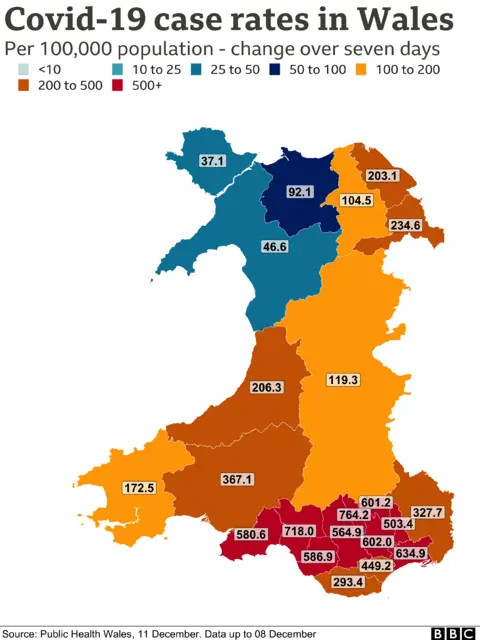Covid: Did Wales' firebreak lockdown work?
It has been a little over a month since Wales came out of its 17-day firebreak lockdown.
Pubs were closed, as were non-essential retailers, and people were told to stay home - much like the first lockdown in the spring.
Wales went into lockdown earlier than the rest of the UK with the restrictions coming in on 23 October.
Ten days earlier, Labour leader Sir Keir Starmer called for a short lockdown in England, where a four-week lockdown did not begin until 5 November.
After an initial drop in cases following Wales' lockdown, they have risen again, with First Minister Mark Drakeford saying the situation had "deteriorated" and was "very serious indeed".
So, how has Wales ended up in this position?
How have case rates changed?
Wales' firebreak ended on Monday, 9 November, with new nationwide restrictions coming into force.
During the week between 2 November and 8 November, the final week of the tighter restrictions, the case rate in the country was 206.2 per 100,000 people.
In the weeks after, this number fell to 170.6, before climbing to 192.3, then to 231.6 by the end of November.
The figure now stands at a record 403.8. The week before the firebreak lockdown it was 234.5.
In Friday's Public Health Wales figures, 10 of Wales' 22 counties, mostly in the south, recorded record high case rates since the start of the pandemic.
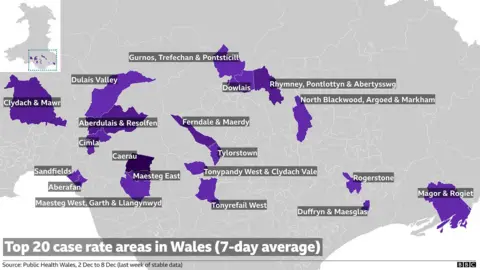
When broken down locally, the heads of the south Wales valleys have shown up most of the hotspots for cases in the last few weeks.
In recent days, Neath Port Talbot has provided five of the 20 worst-hit neighbourhoods and local health officials have warned about community transmission.
Villages around Maesteg in Bridgend are also showing up - with Caerau having the highest local case rate - with more than 2,000 cases per 100,000 in the last week - 142 actual positive tests.
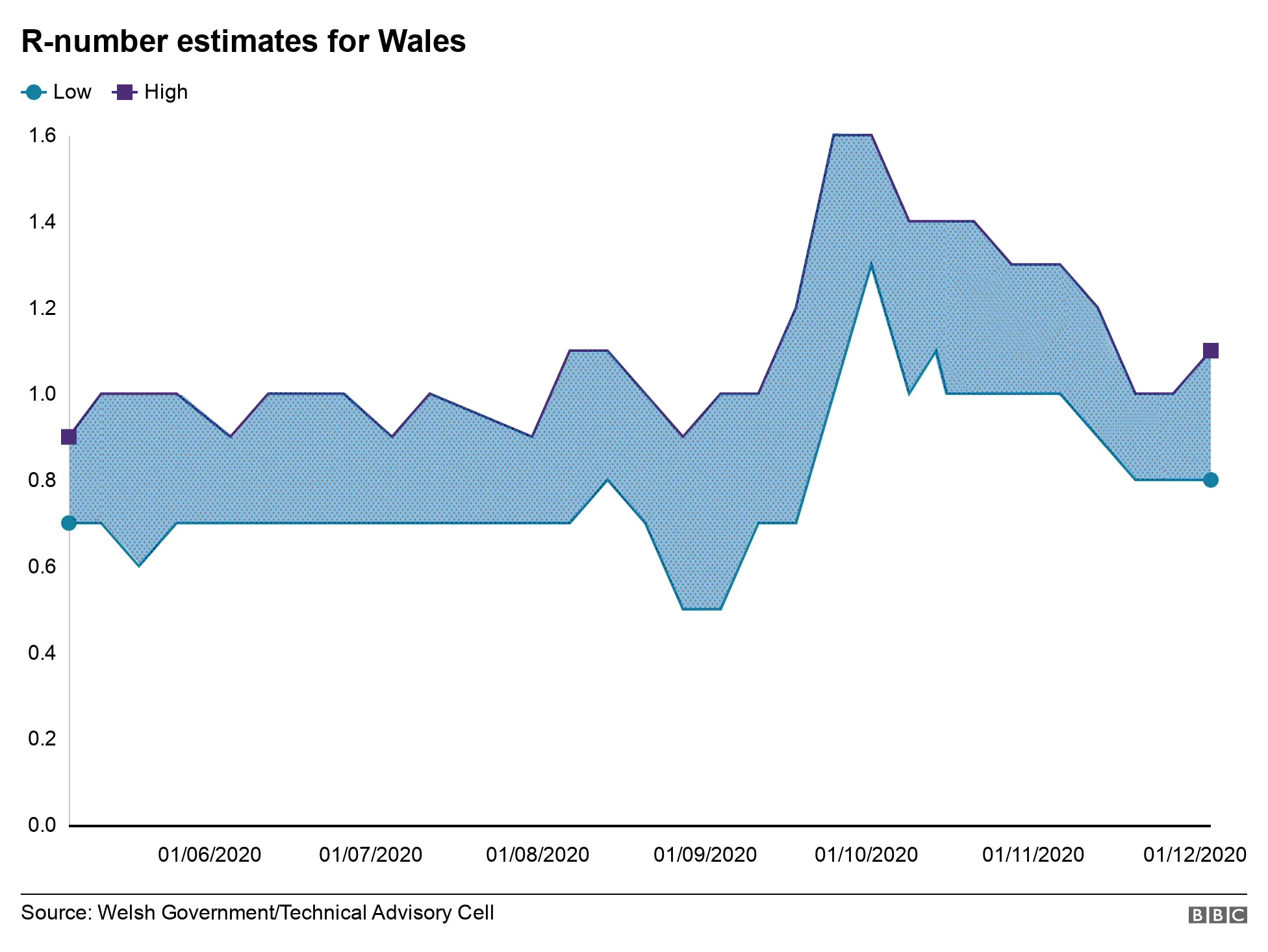

Meanwhile, the 'R' number in Wales has risen to between 0.8 and 1.1, after a fall following the firebreak.
The latest infection survey from the Office for National Statistics on Friday also suggested infections were rising, with 25,600 people in Wales estimated to have had Covid-19 in the week to 4 December, 7,500 more than the week before.
This is one in 120 people.
The first minister said on Wednesday the situation in Wales was "very difficult", but not out of control, amid accusations from opposition parties that he was losing his grip on the virus.
He has has claimed that the recent rise in cases was partly due to people not being willing to follow the rules.
'No mystery' behind case increase
Dr Richard Stanton, a reader in virology at Cardiff University, said there was "no mystery" as to why cases have increased, but the firebreak was successful in reducing the level of the virus in the community - albeit temporarily.
He said: "We know what causes rates to go up and that's people being in close contact with one another.
"The minute you leave a lockdown rates start to go up, because people come into contact with each other again in supermarkets, shops, etc.
"All of these environments lead to an increase in the amount of time people come into contact and the amount of virus in circulation.
"The rate of increase before the lockdown was quite similar to the rate of increase we're having now. The lockdown was projected to reset the level by about a month and it did that. But obviously if you change your measures at that point, the rate is going to go up."
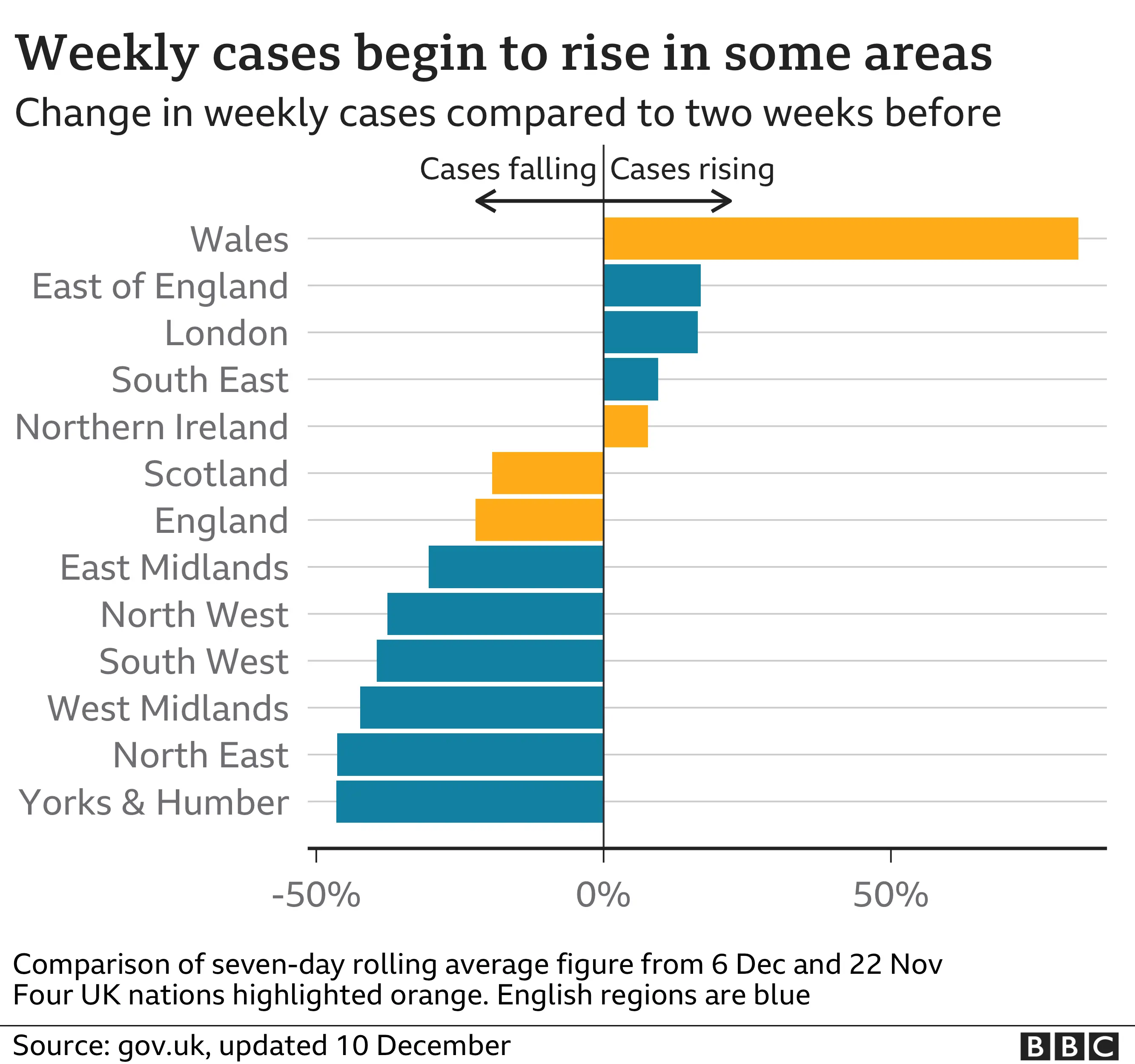

Dr Stanton added that Wales is seeing more of an increase relative to England and other parts of the UK because restrictions have been eased for longer.
Wales' lockdown ended on 9 November, only a few days after England's four-week circuit breaker began.
"I think effectively, the situation in England and Wales is exactly the same but we're offset by about two weeks," he said.
"If England doesn't do anything now, that's where England will be in two to three weeks' time."
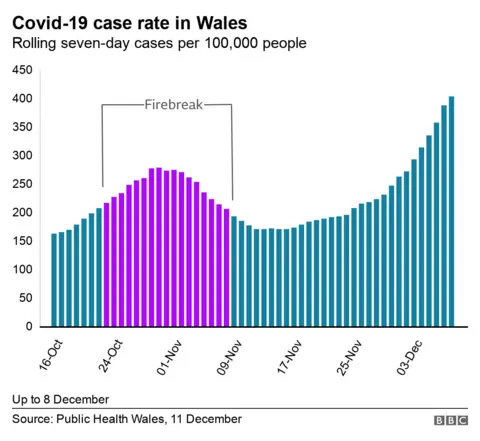

Lockdown 'lifted too soon'
Dr Simon Williams, a senior lecturer in people and organisation at Swansea University, said it was "surprising" at how quickly the rates in Wales had rebounded.
He said: "It was suggested prior to the firebreak that a short, sharp shock was necessary to bring the virus under control, and it isn't, particularly in south Wales."
Dr Williams said there was "no strong evidence" that people were not adhering to the rules and the "vast majority" say they are sticking to them.
However, he added people were becoming "fatigued" due to regular changes in restrictions, which could lead to people breaking certain rules without realising.
"I think if we haven't got evidence that people are breaking rules to any great extent and we can see that the cases are as they are, then you feel like we can only conclude that they were lifted too soon," he said.
He added a longer lockdown, with a more gradual easing of restrictions, would have helped to delay the rise, but that it was "inevitable" that more relaxed restrictions would lead to a rise in cases.
What are the rules post-firebreak?
The firebreak ended and a new set of national rules came into force, which allowed shops, pubs and restaurants to reopen, two households to form a bubble and schools to remain open, although travel to and from the other parts of the UK was banned during England's lockdown.
But in the weeks since, the rules have been altered.
Rules about travelling into England were relaxed, with travel to and from England's tier one and two areas allowed, but pubs and restaurants must now shut by 18:00 and they are not allowed to sell alcohol.
Meanwhile, it has been announced secondary schools and many primaries will move to online learning from next week.
The Welsh Conservatives and Plaid Cymru have both argued against the alcohol ban.
On Friday, Mr Drakeford announced a new four-tier system for Wales, which would decide the level of restrictions in place.
He said Wales was currently in tier three, the strictest package of restrictions short of a firebreak or a lockdown.
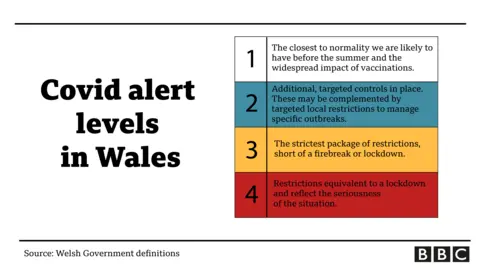

What about hospitals?
The number of people in hospital with coronavirus has also hit record levels since the end of the firebreak, with 1,966 patients in hospital beds as of Thursday.
This included a record number of patients - 628 - recovering from the virus.
The figures also showed 83 people were in critical care.
Around a quarter of all hospital beds have Covid patients in them and this proportion has been slowly rising.
But NHS Wales, unlike during the first wave, has not been cancelling routine surgery yet.
At the moment, about 78 Covid patients per day are being admitted to hospital with the virus on average - with numbers steady and even down slightly on the start of the month.
However, as the winter continues and if Covid patients in beds continue at high levels, pressures will continue.
Does this cover all of Wales?
Hospital admissions have risen in each of Wales' health board areas, except Betsi Cadwaladr, which covers north Wales.
In fact, counties in the north, particularly the north-west, have relatively low Covid levels.
Anglesey (37.1) and Gwynedd (46.6) both have case rates below 50 cases per 100,000 people, far below the Welsh average.
However, nine our of Wales' 22 counties have case rates over 500 per 100,000 people, which equates to one in every 200 people testing positive in the past week.
The worst-hit counties are Merthyr Tydfil (764.2), Neath Port Talbot (718), Newport (634.9), Caerphilly (602), Blaenau Gwent (601.2), Bridgend (586.9), Swansea (580.6), Rhondda Cynon Taf (564.9) and Torfaen (503.4).
All of these counties are in the south and south-east of Wales.
